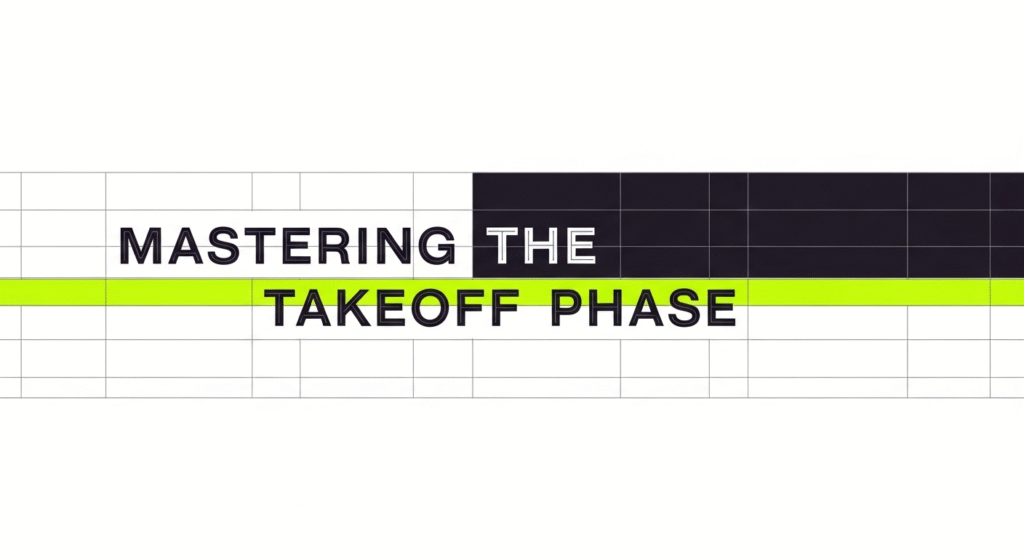Mastering the High Jump Takeoff: Introduction
The takeoff phase is a pivotal component in the high jump, determining the athlete’s ability to clear greater heights with efficiency and grace. Often described as the moment of truth in high jumping, this split-second transition from horizontal speed to vertical lift can make or break your jump. Many athletes focus extensively on their approach or bar clearance while underestimating the critical importance of the takeoff phase. Yet, this precise moment—when your takeoff foot plants firmly on the ground and your body initiates its upward trajectory—is where championships are won and personal records are set.
Mastering this phase requires a sophisticated blend of technical skills and physical conditioning. The intricate coordination between muscle groups, timing, and body positioning all contribute to generating the maximum vertical force needed to propel yourself over the bar. Whether you’re a competitive high jumper looking to add inches to your personal best or a coach seeking to refine your athletes’ technique, understanding the mechanics and training methods specific to the takeoff can provide a significant competitive edge.
In this comprehensive guide, we’ll offer essential tips and strengthening exercises designed specifically to improve your high jump takeoff, enhance vertical lift, and boost explosive power. We’ll break down the technical elements that constitute an effective takeoff, explore specialized drills to refine your mechanics, and outline strength training protocols that target the muscle groups most critical for generating vertical force. By integrating these techniques into your training regimen, you’ll be well-positioned to achieve better jumps and elevate your competitive performance to new heights.
Mastering the High Jump Takeoff: Perfect Your Approach Run
The approach run in high jump is far more than just gathering speed—it’s a calibrated sequence that directly influences your takeoff efficiency. A well-executed approach run sets the foundation for an effective takeoff by positioning your body correctly and generating the optimal momentum for conversion to vertical lift.
Consistency is paramount in the approach run. Many jumpers make the mistake of varying their stride pattern from jump to jump, which creates unpredictability in their takeoff timing. To master the high jump takeoff phase, establish a consistent stride pattern through repeated practice. Count your steps during training sessions and maintain the same number in competition. This consistency builds muscle memory that allows you to focus more on power generation at takeoff rather than worrying about foot placement.
As you progress through your approach, concentrate on gradually building speed rather than starting at full velocity. The ideal approach accelerates smoothly, reaching peak controlled speed during the final three to four strides. This acceleration pattern allows you to maintain proper body position while generating sufficient horizontal momentum to convert into vertical lift during the takeoff phase.
Body alignment throughout the approach significantly impacts takeoff quality. Keep your torso upright but relaxed, with a slight forward lean in the final steps. Your eyes should remain focused on the bar or a fixed point beyond it to maintain spatial awareness. Many elite high jumpers describe feeling as though they’re ‘running tall’ during their approach, which facilitates better posture at takeoff.
For athletes struggling with approach consistency, marking your starting position and key points along your run can provide valuable visual cues. Some coaches recommend placing small markers at the starting point, curve initiation point, and penultimate step position to help athletes internalize the rhythm of their approach. With consistent practice, these external cues become less necessary as the approach pattern becomes ingrained in your muscle memory.
- Maintain a consistent stride pattern to ensure rhythm and momentum.
- Focus on gradually increasing speed as you approach the takeoff board.
- Keep your body aligned and eyes focused on the bar for better coordination.

Mastering the High Jump Takeoff: Enhance Vertical Lift Through Plyometric Exercises
Plyometric training stands as the cornerstone of developing the explosive power necessary for an effective high jump takeoff phase. These dynamic exercises specifically target the stretch-shortening cycle of muscles—the rapid transition from eccentric (lengthening) to concentric (shortening) contraction that generates maximum force in minimal time. This precise mechanism mirrors what happens during the critical moment of takeoff in high jump.
Box jumps represent one of the most valuable plyometric exercises for high jumpers. Begin with a box height that challenges you while still allowing for proper form—typically 18-24 inches for beginners and 30-36 inches for advanced jumpers. Focus on landing softly on the box with slightly bent knees, then step down (rather than jumping down) to minimize impact stress. As your strength improves, increase box height progressively. For maximum takeoff-specific training, perform 3-4 sets of 6-8 repetitions with full recovery between sets to maintain quality of movement.
Depth jumps take plyometric training a step further by enhancing reactive strength. Start by stepping off a 12-18 inch platform, landing briefly on both feet, then immediately exploding upward. The key to effective depth jumps lies in minimizing ground contact time while maximizing jump height. This exercise specifically trains your neuromuscular system to react quickly during the takeoff phase when milliseconds matter. Incorporate 2-3 sets of 5-6 repetitions into your training routine, increasing platform height as you progress.
Squat jumps serve as excellent builders of overall lower body power relevant to the high jump takeoff. Begin in a quarter-squat position, then explosively jump as high as possible while extending fully through your hips, knees, and ankles. The emphasis should be on maximum effort on each repetition rather than high volume. Three sets of 5-8 repetitions with complete recovery between sets will help develop the fast-twitch muscle fibers essential for powerful takeoffs without compromising quality.
To address the common issue of strength imbalances between legs, incorporate single-leg plyometrics such as single-leg box jumps or lateral bounds. Since high jump takeoff occurs on one leg, unilateral training is particularly relevant. Start with lower heights and fewer repetitions than bilateral exercises, gradually building volume as your stability improves. These exercises not only build strength in your takeoff leg but also enhance proprioception and balance—crucial elements for maintaining proper body position throughout the takeoff phase.
- Incorporate box jumps and depth jumps to increase leg power.
- Perform squat jumps with maximal effort to develop fast-twitch muscle fibers.
- Use single-leg plyometrics to address imbalances and improve unilateral strength.
Mastering the High Jump Takeoff: Strengthen Core and Lower Body Muscles
The development of robust core and lower body strength forms the fundamental power base from which an effective high jump takeoff launches. While plyometric training addresses the explosive component, a comprehensive strength foundation ensures that this power can be generated consistently and safely. Without adequate strength in these key areas, even perfect technique will fall short of producing optimal results in the high jump takeoff phase.
Squats stand as perhaps the most valuable weight training exercise for high jumpers, directly strengthening the quadriceps, hamstrings, and glutes that generate force during takeoff. Begin with bodyweight squats to perfect form, then progress to barbell back squats or front squats. For high jump-specific training, focus on both strength (heavier weights, 4-6 repetitions) and power (moderate weights moved explosively, 3-5 repetitions). A particularly effective variation is the jump squat, performed with a light barbell or dumbbells, emphasizing explosive extension through the hips and knees—mirroring the action of the takeoff phase.
Deadlifts complement squats by developing the posterior chain—hamstrings, glutes, and lower back—which provides essential stability and power during the plant and extension of the takeoff. Conventional, sumo, and single-leg (Romanian) deadlift variations all offer benefits for high jumpers. Single-leg deadlifts are especially valuable as they address strength imbalances while training balance and proprioception specific to single-leg takeoff. Include deadlift variations 1-2 times weekly in your strength program, alternating between heavier strength-focused sessions (4-6 repetitions) and more moderate power-focused work (6-8 repetitions with emphasis on bar speed).
Core stability represents a crucial but often underappreciated component of high jump takeoff efficiency. The core musculature—including abdominals, obliques, and lower back—serves as the vital connection between lower and upper body, transferring force generated by the legs through the torso. Planks in various positions (front, side, and rotating) build isometric strength that maintains torso rigidity during takeoff. For rotational strength relevant to the Fosbury flop technique, Russian twists and medicine ball rotational throws are particularly effective. Aim to incorporate 10-15 minutes of core-specific training 3-4 times weekly, focusing on both stability (holds) and rotational power (dynamic movements).
Specific attention to calf strength is essential as these muscles provide the final push-off during takeoff. Standing calf raises, seated calf raises, and jump rope exercises all contribute to developing stronger, more responsive calf muscles. For takeoff-specific training, single-leg calf jumps—performed by explosively pushing through the ball of one foot—directly simulate the extension pattern of high jump takeoff. These exercises should be performed 2-3 times weekly, with higher repetitions (12-15) than other strength movements to build both strength and endurance in these critical muscles.
- Engage in weight training exercises like squats and deadlifts to build lower body strength.
- Incorporate planks and Russian twists to enhance core stability.
- Focus on hamstring and calf exercises to improve overall leg strength and flexibility.

Mastering the High Jump Takeoff: Conclusion
Improving the takeoff phase in high jump represents perhaps the single most valuable focus area for athletes seeking to elevate their performance. This critical moment—where horizontal momentum transforms into vertical lift—demands a sophisticated integration of technical precision and physical power. By developing mastery of this phase, jumpers can achieve remarkable improvements in their clearing heights without necessarily increasing their overall physical capacities.
The approach to enhancing your high jump takeoff must be multi-faceted and systematic. First, perfecting your approach run creates the consistent foundation upon which an effective takeoff can be built. The rhythmic, gradually accelerating pattern of steps positions your body optimally for the explosive plant and extension that follows. Without this consistency, even the strongest jumper will struggle to convert speed into height effectively.
Plyometric training provides the explosive power dimension necessary for an impactful takeoff. These specialized jumping exercises—box jumps, depth jumps, and squat jumps—develop the neuromuscular pathways that enable rapid force production during the brief ground contact of the takeoff phase. Combined with comprehensive strength development of the core and lower body through targeted weight training, these exercises build the physical capacity to generate significant vertical force when it matters most.
Finally, technical refinement through specific drills addresses the precision elements of the takeoff. The J-step, hurdle drills, and takeoff box exercises create movement patterns that become second nature through deliberate practice. These drills isolate components of the takeoff action, allowing for focused improvement that transfers directly to competition performance.
Commit to integrating these elements into your training program consistently, and you’ll likely notice improvements not only in your maximum clearing height but also in the efficiency and confidence with which you approach the bar. Remember that mastering the high jump takeoff phase requires patience—neural adaptations and technical refinements develop gradually over time. Track your progress through video analysis and measured jumps, making small adjustments as needed.
With dedication to these essential tips and strengthening exercises, you’ll develop the explosive power and technical proficiency to achieve higher jumps than ever before. The takeoff phase may last only a fraction of a second, but its impact on your high jump performance is immeasurable. Master this critical moment, and watch as your capabilities in this challenging and elegant event soar to new heights.
Coach Otto is a certified track and field coach with over 15 years of experience working with high jumpers at high school, collegiate, and elite levels.

